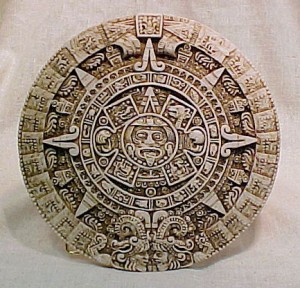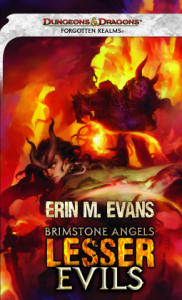For all of Mira’s assurances, nothing was simple about entering the cavern, in Farideh’s opinion. First, there was a climb up a nearly sheer rock face, the stream that seemed to trickle out the broken door pouring down on her head. She hauled herself up onto the narrow ledge behind Mira, not wanting to consider how they would get back down.
–Lesser Evils by Erin M. Evans
One of the things I liked about Mike Mornard’s old-school dungeon crawl was that there was a significant cost to entering the dungeon each time. You had to negotiate past a mad wizard on each trip. This encouraged you to stretch your resources, which made things a little more tense.
You can’t come up with a gimmick like that for every dungeon, of course. But you can come up with a gimmick like that for a LOT of dungeons.
In the passage above, the difficulty is simply a dangerous climb to the dungeon entrance. That’s not bad at all. (In the book, there’s also time pressure on the dungeon excursion – another classic.)
Another way to increase the dungeon-entry cost is to institute, not a fixed cost, but a lottery. Every time you open the door, there’s a visible risk. In the simplest case, there’s a wheel-of-fortune roulette wheel on the door, and it spins every time you open the door. If you get double zeroes, something bad happens. Maybe a trap is spring, or maybe the dungeon just collapses, leaving you unharmed but burying any treasure you hadn’t looted yet.
 Free-associating from the idea of an ancient roulette wheel, I’m thinking of one of those round calendars like the Mayan calender.
Free-associating from the idea of an ancient roulette wheel, I’m thinking of one of those round calendars like the Mayan calender.
The Mayan calandar has 20 months – convenient for D&D random number generation! But luckily, a 12-month calendar comes with its own die as well.
In fact, I have a d12 with the months on it, just begging for its own house-rules subsystem. Maybe this is it!
In order to open the door, you have to spin the stone calendar disk on the door. We’ll associate a god or demon with each month. The evil god, or the scariest demon, is associated with January (or a roll of 1 on the d12).
We could further tie the dungeon to the die roll: based on the season you roll, the dungeon is altered. If one god is associated with lightning, then lightning crackles down the hallways and powers otherwise inoperable machines. Or maybe it’s based on the season. If you roll a spring month, the dungeon walls are covered with climbable ivy: some new areas are now accessible. In winter, snow and ice coat the floors, and you need winter clothes to avoid exposure damage. In summer, it’s hot, and the dungeon’s pools and rivers are dried up, revealing treasures and secrets. Fall? Well, fall is a time of death and decay. So, business as usual in the dungeon.
Tags: everybook









This is a really cool idea! In addition to tabletop implementation, this really cries out for use in a video game. Here I’m recalling some of the levels in Rocksteady’s Batman games, where you go through an area more than once and watch it change conditions each time you go through.
Hm, planning out 12 (or 20) different dungeons instead of one? More Work – but if you need 12 Items, that are in each of the dungeons? Surprise!
Yeah, 12 seems excessive for a random roll every time, especially because of the last pixel problem, so I lean more towards seasonal differences rather than monthly differences. After all, what exactly is the thematic difference between July and August?
No Google hits for “last pixel problem”. What do you mean?
Oh, this was a phrase I picked up from baf, who’s a video game designer – I thought it was a pre-existing concept! The idea is this: let’s say you have a computer program that changes the color of the screen from red to blue by coloring randomly-chosen pixels. At first, every pixel it colors will make the screen bluer. However, at some point, almost all of the pixels will be colored, and most randomly-chosen pixels will already be blue. Progress will seem to slow down.
Once we have only one pixel left, it’s extremely unlikely that that specific pixel will be chosen on any given try. It’s possible that the time it takes to color the last pixel will be nearly as long as, or longer than, the time it takes to color the whole rest of the screen.
Same with die rolls. In your first 15 rolls of a d10, you might happen to roll the numbers 1, 2, 3, 5, 6, 7, 8, 9, and 0 (some multiple times), and you might need another 15 rolls before you end up rolling a 4 and completing the set.
Hm, spinning forth my idea of one item in each of the 12 dungeons – what if you can use these items to “block” the according dungeon?
That would also reduce dice rolling when considering which dungeon to use – first you have the full range of 12; then you might get the same dungeon on a d12, but that is only one reroll. Switch to d10 etc…
And if you block all 12 dungeons, you can have a 13th – the master dungeon!
“The 13th Month” has a nice ominous ring to it for the final door.
A dungeon lottery? What a great idea!
http://www.theskyfullofdust.co.uk/adventures/lottery-dungeon/
No Google hits for “last pixel problem”. What do you mean?